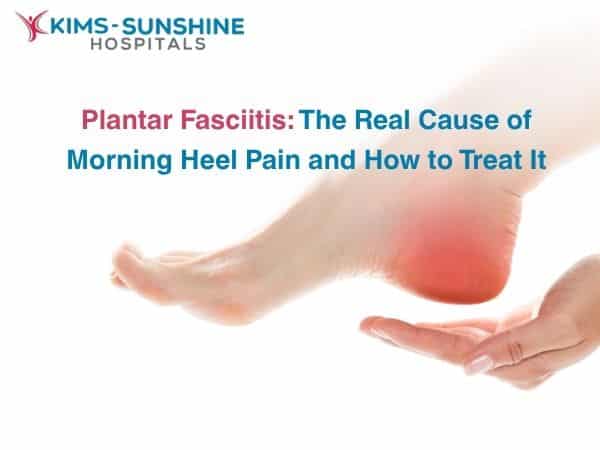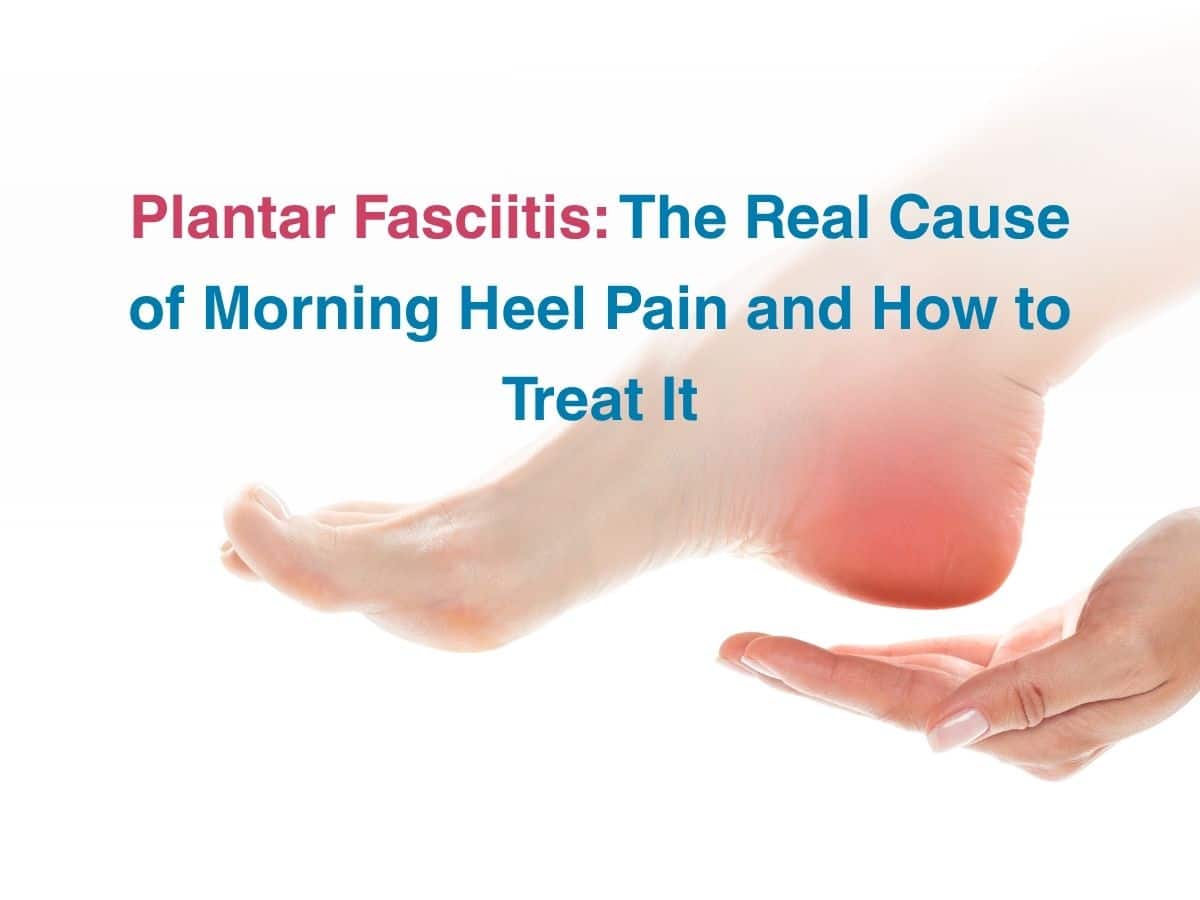
Plantar Fasciitis: The Real Cause of Morning Heel Pain and How to Treat It
 Plantar fasciitis is a condition that is caused by the inflammation of specific connective tissue found in the heel of your feet. It is one of the most common orthopaedic complaints all over the world and its incidence in the Indian subcontinent is particularly high- as it is found to affect certain individuals with jobs which involve a lot of physical activity. The good news is that it is caused due to excessive strain and if you rest and take some medications, you will get better.
Plantar fasciitis is a condition that is caused by the inflammation of specific connective tissue found in the heel of your feet. It is one of the most common orthopaedic complaints all over the world and its incidence in the Indian subcontinent is particularly high- as it is found to affect certain individuals with jobs which involve a lot of physical activity. The good news is that it is caused due to excessive strain and if you rest and take some medications, you will get better.
What Is Plantar Fasciitis?
When the plantar fascia- specialised band of connective tissue that connects the heel to the ball of the foot and the toes gets inflamed and painful due to constant strain, it is called plantar fasciitis. For most people, only one side tends to get affected, though some people may complain of symptoms on both feet at the same time. Plantar fasciitis is one of the most well known causes of heel pain in the morning. This is because the joint gets tighter at night and when you wake up and walk first thing in the morning, it aches for a while and then becomes normal. Some of the most common causes of plantar fasciitis include- working while standing up for long periods of time in a day, being overweight, if you have flat feet or high arches on your feet, respectively. If you walk around at home barefoot or don’t wear supportive footwear, or tend to exercise without warming up, then it may be a problem.
Symptoms Of Plantar Fasciitis-
The most commonly felt symptoms include-
- Pain in the heel and the arch of the foot
- Stiff feeling around the heel
- You may notice some swelling around the heel too at times.
- Your achilles tendon may feel tight.
The degree of pain may vary but most people describe it as a sharp or stabbing pain when you first begin to walk or move after sitting down for a while, or standing up.
Plantar Fasciitis Diagnosis (Physical Exam, Imaging)-
A diagnosis for this condition will first begin with a detailed physical exam- where your doctor will ask you about symptoms you may have. They will also press down on the heel and ankle regions to check for inflammation and pain. For some people, plantar fasciitis may be caused due to some underlying condition- which is when imaging may be used. X-rays, ultrasound or MRI of the heel and foot will be done to understand the cause for your pain.
Treatments For Plantar Fasciitis-
Treatments for plantar fasciitis are simple but effective-
- You may be prescribed pain killers for the pain. But, don’t take such NSAIDs for prolonged periods of time, as it can cause other unwanted side effects.
- You will be asked to rest well.
- You can ice your heel twice a day, with a frozen water bottle that is covered with some cloth. Rolling the bottle gently using your heel will reduce inflammation.
- You should wear good quality shoes- which will support your arches and plantar fascia. So, don’t wear flats or flip flops- where your feet will move around too much.
- You can include customised shoe inserts for better arch protection.
- Stretching and getting some gentle exercise done on a daily basis will greatly help reduce strain and pain in your heel.
- For more severe cases, your doctor may suggest getting PRP therapy done or steroid injections – which will be directly injected into your plantar fascia to reduce inflammation.
- Shockwave therapy on your skin can be done to improve blood flow to your foot.
- Percutaneous needle tenotomy- this is a simple procedure where your doctor will use a needle to poke a hole into your plantar fascia. The hope is that your body will send in more blood and wound healing cells- to help reduce pain and inflammation in the long run.
Conclusion
Plantar fasciitis is a common condition that affects people who stand for long periods of ime and studies have shown that the condition is observed in traffic policemen, mall workers, workers form the service or hospitality industries and it affects both men and women. Plantar fasciitis goes away with normal exercising, stretching and pain killers but for some people, surgery may be necessary. Talk to your doctor about your pain and take good care of your feet, now and always.






